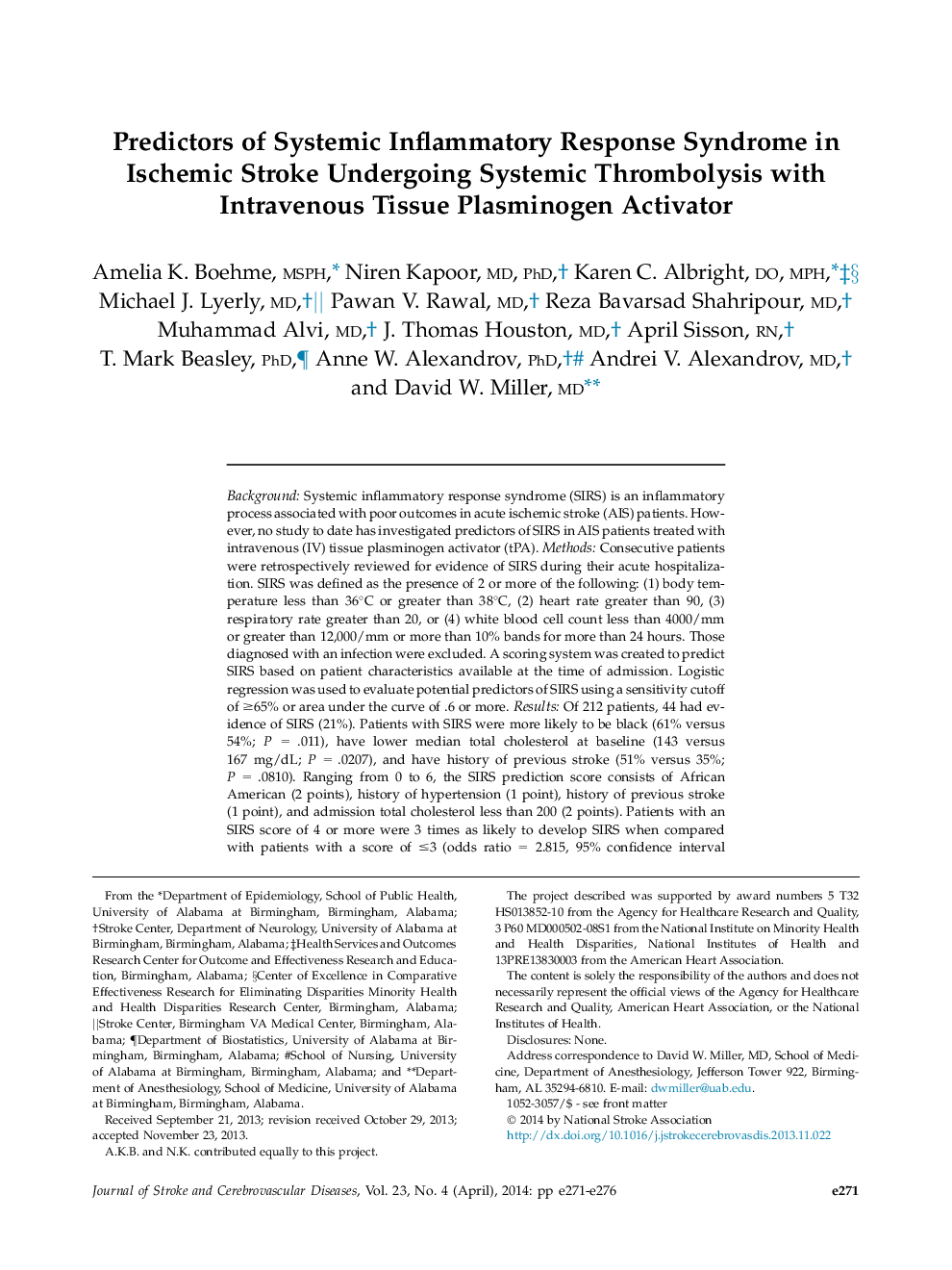| کد مقاله | کد نشریه | سال انتشار | مقاله انگلیسی | نسخه تمام متن |
|---|---|---|---|---|
| 2704000 | 1144667 | 2014 | 6 صفحه PDF | دانلود رایگان |
BackgroundSystemic inflammatory response syndrome (SIRS) is an inflammatory process associated with poor outcomes in acute ischemic stroke (AIS) patients. However, no study to date has investigated predictors of SIRS in AIS patients treated with intravenous (IV) tissue plasminogen activator (tPA).MethodsConsecutive patients were retrospectively reviewed for evidence of SIRS during their acute hospitalization. SIRS was defined as the presence of 2 or more of the following: (1) body temperature less than 36°C or greater than 38°C, (2) heart rate greater than 90, (3) respiratory rate greater than 20, or (4) white blood cell count less than 4000/mm or greater than 12,000/mm or more than 10% bands for more than 24 hours. Those diagnosed with an infection were excluded. A scoring system was created to predict SIRS based on patient characteristics available at the time of admission. Logistic regression was used to evaluate potential predictors of SIRS using a sensitivity cutoff of ≥65% or area under the curve of .6 or more.ResultsOf 212 patients, 44 had evidence of SIRS (21%). Patients with SIRS were more likely to be black (61% versus 54%; P = .011), have lower median total cholesterol at baseline (143 versus 167 mg/dL; P = .0207), and have history of previous stroke (51% versus 35%; P = .0810). Ranging from 0 to 6, the SIRS prediction score consists of African American (2 points), history of hypertension (1 point), history of previous stroke (1 point), and admission total cholesterol less than 200 (2 points). Patients with an SIRS score of 4 or more were 3 times as likely to develop SIRS when compared with patients with a score of ≤3 (odds ratio = 2.815, 95% confidence interval 1.43-5.56, P = .0029).ConclusionsIn our sample of IV tPA-treated AIS patients, clinical and laboratory characteristics available on presentation were able to identify patients likely to develop SIRS during their acute hospitalization. Validation is required in other populations. If validated, this score could assist providers in predicting who will develop SIRS after treatment with IV tPA.
Journal: Journal of Stroke and Cerebrovascular Diseases - Volume 23, Issue 4, April 2014, Pages e271–e276
